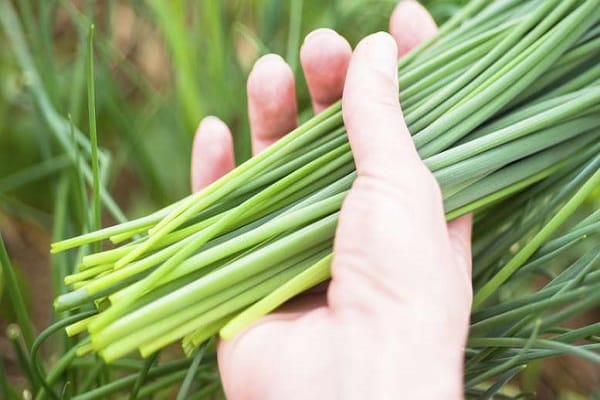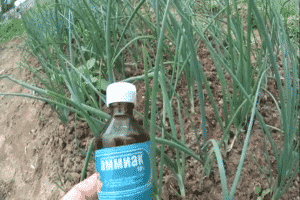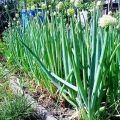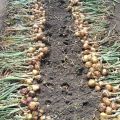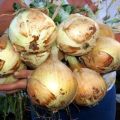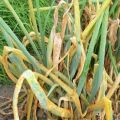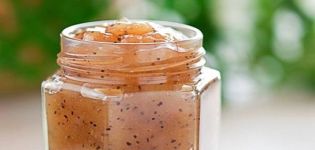Description of varieties of chives, especially cultivation and care
Chives belongs to the onion family, they are grown for food and for decorative purposes. Cultivation is not difficult, the plant adapts to any conditions, but it is important to know and take into account some features. The culture is good for the human body, it contains many vitamins, minerals and natural phytoncides. Thin, dark green feathers and small chives are added to many foods, salads, and snack recipes.
Content
- 1 Description and features of chives
- 2 Popular varieties
- 3 Beneficial features
- 4 Soil preparation and planting chives
- 5 Place selection
- 6 Predecessors and neighbors of skoroda onions
- 7 Chives care
- 8 Top dressing
- 9 Watering chives
- 10 Reproduction of chives
- 11 Reproduction of onion by seeds
- 12 Growing seedlings
- 13 Dividing the bush
- 14 Greens cut
Description and features of chives
Shnitt-onion in translation from German means cut-off onion, belongs to the group of herbaceous plants. Another name for the culture is skoroda, but there are many other synonyms. In the description of the culture, the features of the underground and aboveground parts are indicated.
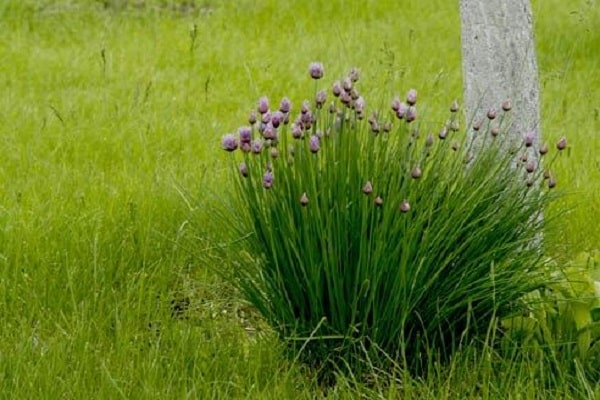
The culture grows in the form of a small bush, the tubular leaves of bright green color reach 25 cm in length. At the base, the leaves expand slightly. In four years, the bush can grow up to 60 cm long and consist of numerous stems with inflorescences (up to 100 pieces).
The underground part of the plant consists of filamentous roots, on which oblong bulbs of up to 20 pieces are formed. The color of the bulbs can be brown-white or purple-red. Blooming arrows are formed in the second year.
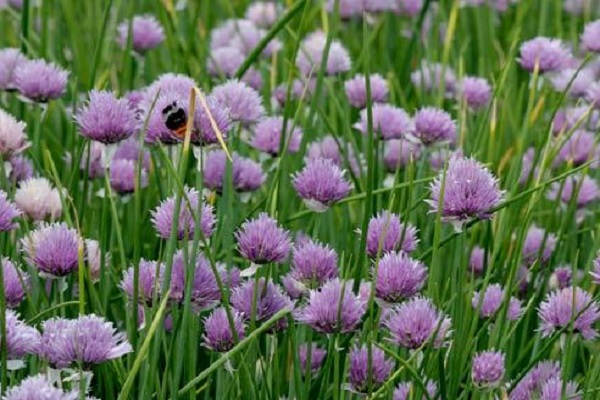
It blooms for several weeks with beautiful purple, lilac or whitish flowers, spherical in shape. It blooms in late May and lasts until August. The seeds are formed in a capsule, as they ripen, they acquire a black color, angular-oval.
Popular varieties
All chives are most commonly grown to be eaten with green leaves, as large bulbs do not form. Leaves grow back quickly after cutting, so you can harvest greens up to three times per season.
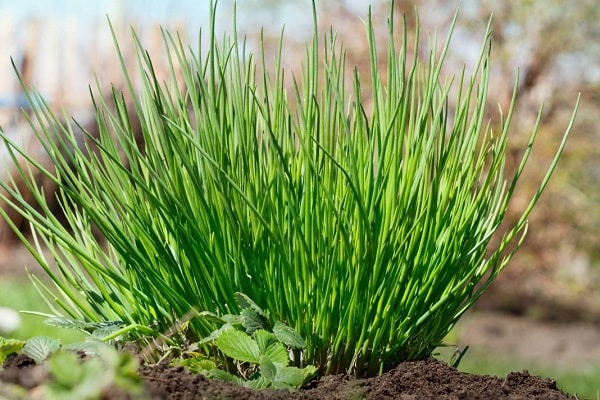
Skoroda onions do not require special care, all varieties are cold-resistant and highly resistant to diseases and pests. Seedlings can withstand short-term frosts up to -4 degrees.
The chives are divided into two large groups. The first group includes varieties that are grown as a vegetable crop. Popular varieties include: Honey plant, Khibinsky, Siberian, Prague, Crocus. The second group includes varieties bred for decorating flower beds and borders: Moskovsky, Elvi, Borderny.
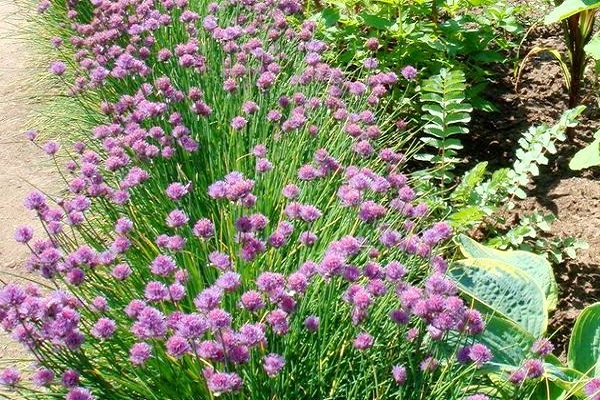
Beneficial features
High taste properties determine the widespread use of chives in cooking. The composition contains more than 3% sugars, a sufficient amount of carbohydrates, fats, proteins. Fresh, as a spice, is added to salads, fish, meat dishes.The green leaves are tender, without bitterness, therefore they add a special piquancy to baked goods, omelets, sauces and other dishes.
Ornamental shrubs can decorate the site, the culture looks especially beautiful during flowering. In this case, the crop is grown as a perennial. The pleasant scent of flowers attracts the attention of pollinating insects.
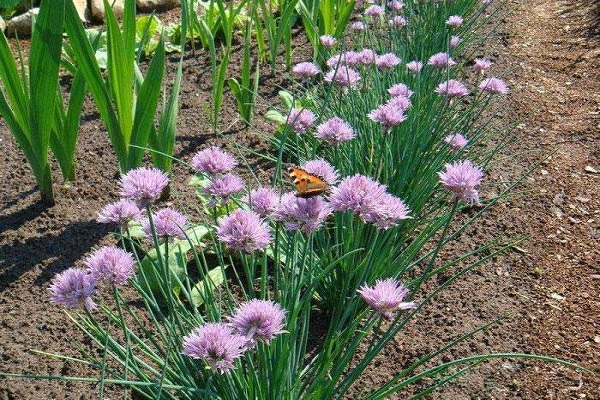
Due to its vitamin composition, chives are classified as medicinal plants. Useful components include:
- vitamins (A, C, B, E, K);
- minerals;
- phytoncides;
- amino acids (lysine, histidine, methionine);
- trace elements (selenium, zinc, manganese).
Thanks to a whole list of useful components, chives increases appetite, improves the functioning of the digestive system, increases immunity, has a beneficial effect on the functioning of the kidneys, gallbladder, cardiovascular system, and is an anthelmintic.
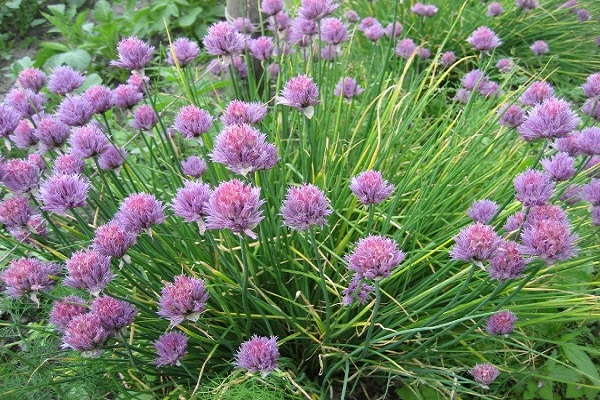
Soil preparation and planting chives
Chives do not have any special requirements for the composition of the soil, but grows best on fertile, loose, moist soil rich in lime.
The place intended for planting is cleared of weeds. In the fall, the site is dug to a depth of 28 cm and fertilizers are applied. If the soil is dense and clayey, add humus or compost. It is also useful to add mineral components such as superphosphate and urea.
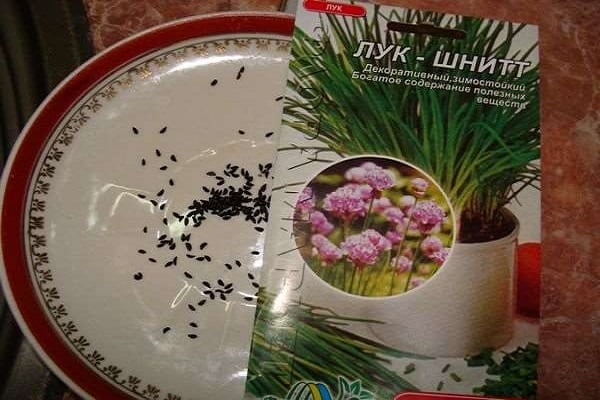
In the spring, in the first half of April, the site is dug up again, leveled and slightly compacted, only after that they begin to divide into furrows with a distance of 30 cm.The seeds are deepened by 1 cm.
The first shoots should appear within a week. At this time, it is useful to loosen the soil between the rows. This will improve the oxygen supply to the roots. As soon as the first real leaf unfolds, thinning is carried out, leaving a distance between shoots of 11 cm. The next care consists in timely weeding, loosening and watering.

Place selection
When choosing a site for planting chives, it should be borne in mind that the culture does not tolerate direct sunlight. In the sun, the leaves become coarse, lose their juiciness and become unsuitable for use in cooking. The soil must receive sufficient moisture.
All chives in the onion family thrive on well-drained, loose soil. A loamy, sandy loam composition is well suited. Growing from seed is not recommended in sandy soils due to poor moisture retention.
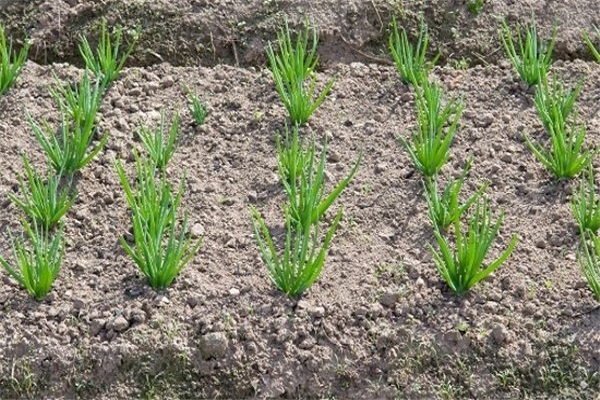
If you plan to grow chives as a perennial crop, it is best to choose a shady, humid place. In this case, the bush will form juicy, green leaves for a long time. As an annual plant, onions are grown in separate beds.
Predecessors and neighbors of skoroda onions
Spicy herbs, cucumbers, radishes, and potatoes are considered the best precursors for chives. Diseases of cucumber and other permitted predecessors do not pose a danger to onions. You can plant carrots, tomatoes in the neighborhood. It grows poorly next to legumes, cabbage and beets.

The most popular variety of chives is Bohemia. You cannot plant a plant in the same place for more than 4 years. It is characterized by a high yield and a semi-sharp taste of green feathers. Can be used as a decoration for a summer cottage.
Chives care
During the cultivation of chives, a number of standard conditions must be met:
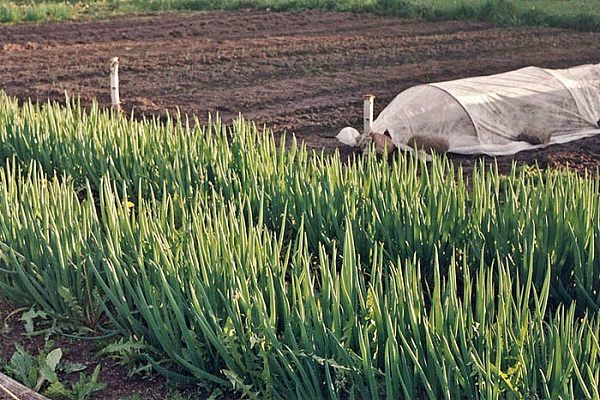
- in the first year after planting the seeds of the crop, it is necessary to regularly loosen the soil;
- it is important not to allow the growth of weeds, as they drown out the growth of young bushes;
- regular and abundant watering;
- it is recommended to mulch the soil with fine mulch (peat, rice husks, sawdust);
- dry leaves are removed in autumn.
To get a juicy green mass, you need to feed with organic and mineral components several times per season.
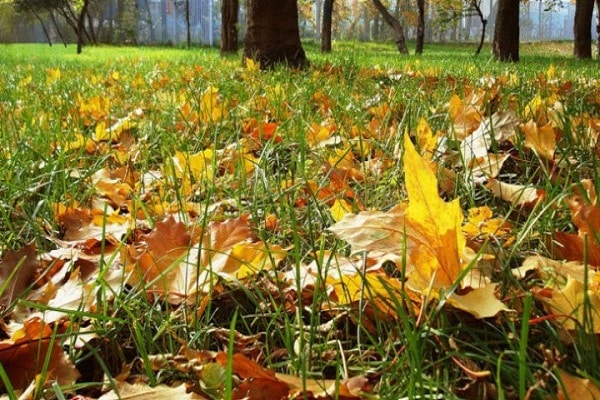
Top dressing
The plot for planting onions begins to be prepared in the fall. It is dug up and mineral and organic fertilizers are applied. It is necessary to mix 5 kg of manure, 25 g of superphosphate, 17 g of potassium salt. Ammonium nitrate is introduced in the spring. The supply of nutrients is enough for the entire first year of plant development.
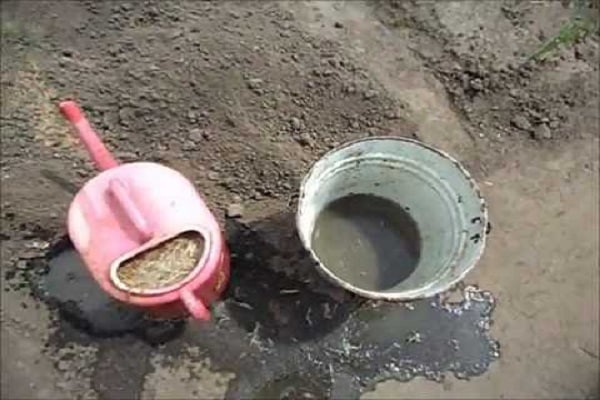
In the second year of growing and caring for the crop, it is necessary to start fertilizing after the first cut of the greenery. Cut the greens when the feathers reach a height of 30 cm. You can use wood ash, slurry of mullein or bird droppings. From mineral fertilizers, you can choose nitrophoska, azofoska. The following dressings are carried out after each cut of greenery.
The main pest of chives is onion lurker... To reduce the risk of attack by insect pests, seed treatment and timely feeding will help. Additional nutrients increase the plant's immunity.
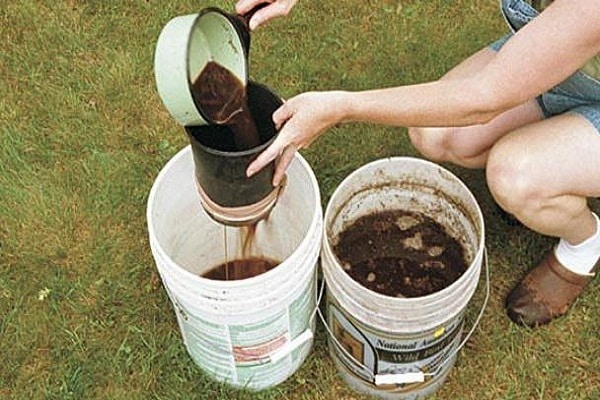
Watering chives
Cultivated chives need regular and abundant watering. The soil should be constantly moist, but you should not allow moisture to stagnate near the roots.
If the soil is allowed to dry out, onion leaves begin to coarse, lose their juiciness and useful properties. In this case, you need to cut off all the hardened greens and wait for new feathers, avoiding a dry crust on the surface of the site.
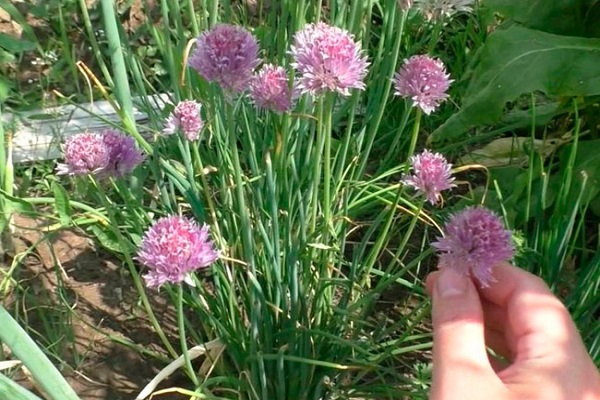
Reproduction of chives
Reproduction of chives occurs by seeds, seedlings, bulbs or dividing a bush. Each of the methods assumes its own characteristics of growing and care. You can grow chives from seeds on the windowsill, in the open field and in a greenhouse.
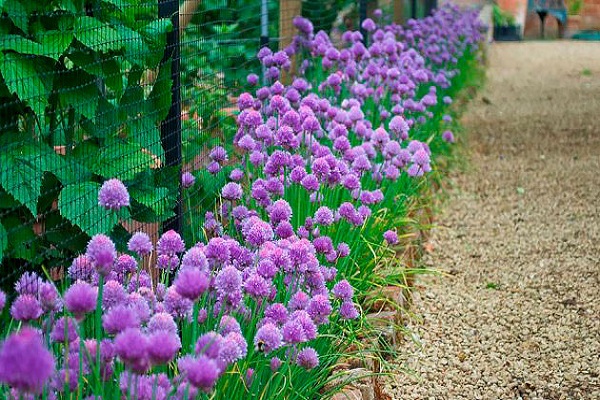
Reproduction of onion by seeds
Onion seeds retain their germination for two years, later this property decreases. With long-term cultivation, reproduction occurs by self-seeding. The seed pods crack as they ripen, or you can pick the pods and collect the seeds yourself.
Seeds are sown in early April, July, or late September. They are pre-soaked and dried. Chives seeds are small, seedlings appear weak, therefore they require special care and attention. It is best to carry out propagation by seedlings or dividing the bush.
The best varieties of chives for growing by seeds: Chemal, Siberian, Bohemia, Khibinsky, Velta. Growing onions from seeds involves regular watering, loosening the soil, weeding from weeds.
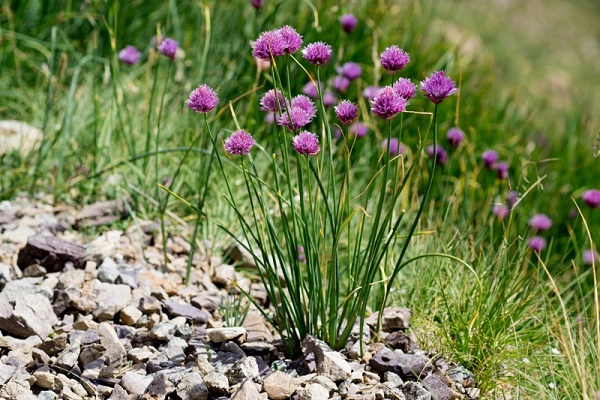
Growing seedlings
Chives can be planted by seedlings. Seeds should be soaked in warm water for a day before planting. They begin to plant in early March in prepared boxes with a loose soil mixture. In prepared holes 1 cm deep, lay out one seed at a time and cover with earth. Then the boxes are covered with plastic wrap and put away in a warm place. On day 4, the first shoots should appear. The temperature in the room should be around 20 degrees.
When is the best time to transplant seedlings outdoors? Two months later, when two real leaves on each bush unfold, they are transplanted to a permanent place. The distance between the rows is 35 cm, in a row the spacing should be 25 cm.
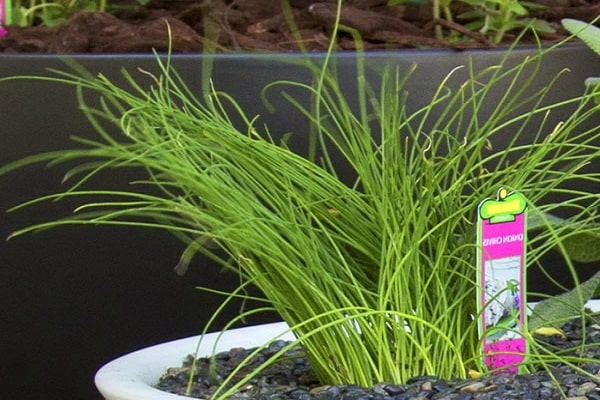
Dividing the bush
Gradually, as it develops, chives will cover the soil with overgrown bushes. The yield and quality of green mass decreases. In one place, the culture is grown for no more than 5 years. After that, they are transplanted, dividing the chives into several parts.
The selected perennial onion bush is carefully dug out, divided into 3-4 parts, so that each part has roots. In the prepared area, holes are made, watered with water and the separated parts of the plant are planted, covered with earth. The soil is compacted a little and watered again.
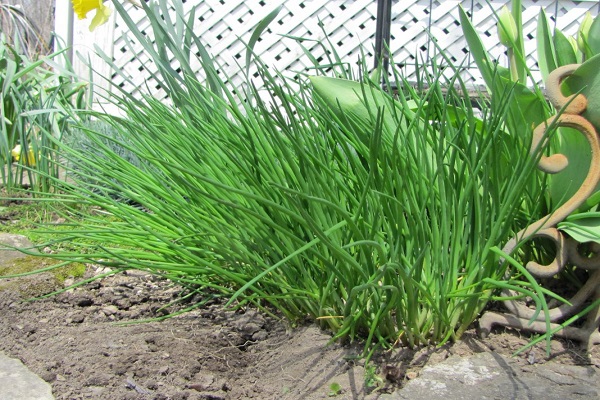
Greens cut
Up to 3-4 cuts of greens are carried out throughout the year. Fresh leaves can be cut after they have grown to a height of 30–40 cm.The first cut is carried out in mid-May, and the last cut falls on the last days of September.
With a one-year cultivation of a culture, cutting is carried out throughout the season, and in the spring, bushes are dug up along with the roots, using bulbs for food. When grown properly, you can get a good harvest.
With long-term cultivation of the culture, the bushes begin to be dug out after 3-4 years. Part of the plant is used for further propagation, and for the rest they are used in cooking.
